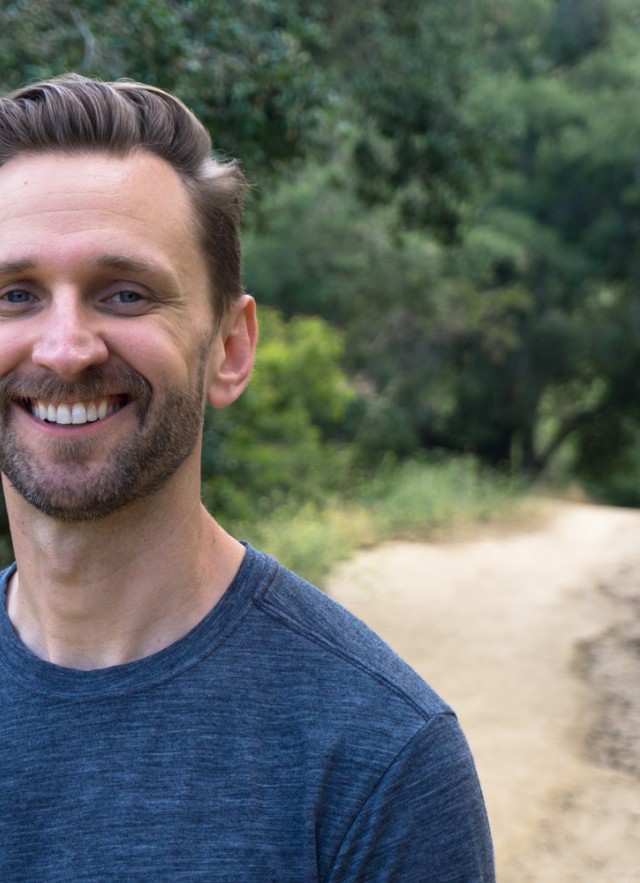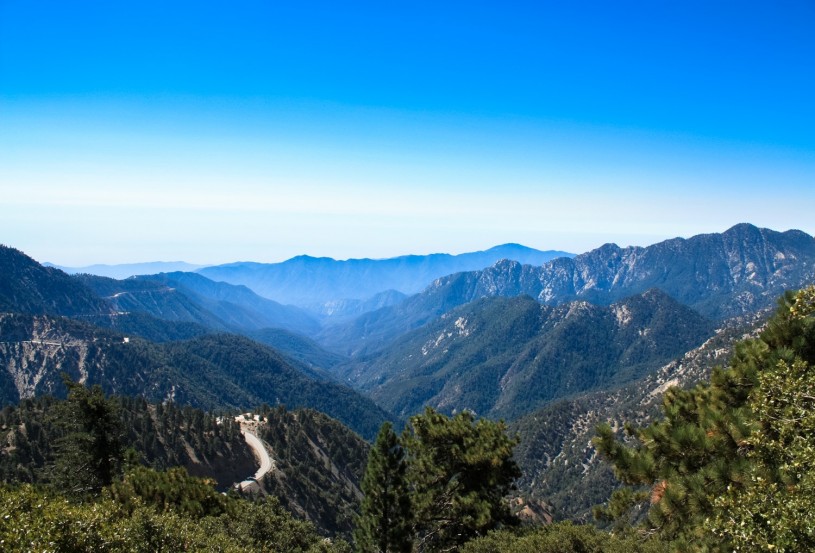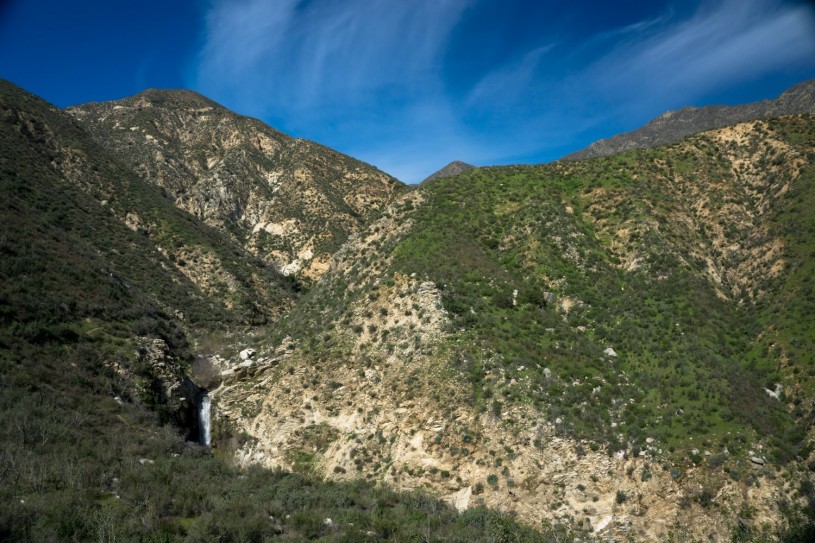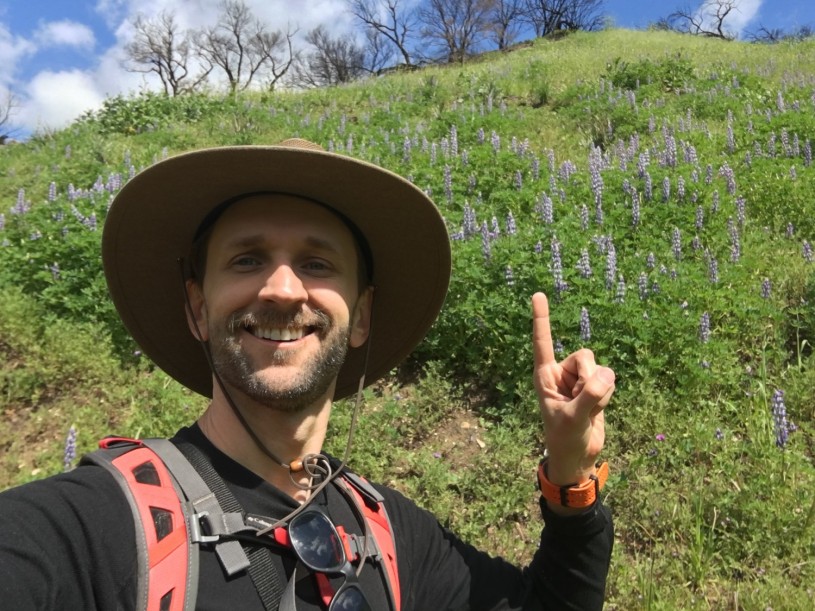Voices of L.A. Nature: Interview with Casey Schreiner
Welcome to our new series, "Voices of L.A. Nature," where we'll hear stories from a diverse range of Angelenos about their relationships with nature in L.A.

Welcome to our new series, "Voices of L.A. Nature," where we'll hear stories from a diverse range of Angelenos about their relationships with nature in L.A. This month we're celebrating LGBTQ Pride month, with three interviews from the community. Stay tuned throughout the year, for more Voices of L.A. Nature!
Casey Schreiner a.k.a. Modern Hiker, is a writer, hiker, and all advocate for nature in Los Angeles. He rates himself a 10/10 with absolutely no doubt on the, "I love nature scale." He lives right next to Griffith Park and often hikes the trails there. This along with tending his California native plant garden allows him to feel close to nature every day. Keep reading to find out more about Casey's relationship to, and adventures through L.A.'s amazing nature!
Can you tell us a little bit about your job/career?
Like many Angelenos, I sometimes seem to be working a dozen jobs at the same time, but I moved out to Los Angeles to work in television. I was lucky enough to land a long-term job as writer, then head writer on the now-defunct G4 network’s, “Attack of the Show,” which was a daily, live variety/comedy show about nerd culture that ran for several years. During that time, I discovered hiking in Los Angeles and started writing about trails to try a different kind of writing, and that eventually morphed into the website Modern Hiker. Since then, I’ve written scripts for other television shows and live events for entertainment and video game companies, a handful of outdoor magazines and publications, and wrote the book "Day Hiking Los Angeles" (Mountaineers Books), which features 125 trail guides all over the Los Angeles area. I just finished the manuscript for my second book Discovering Griffith Park which will be the first in-depth guidebook written about one of the largest and most fascinating city parks in the country. That book will be out in early 2020. I also still manage and write for Modern Hiker, too.

Do you incorporate nature into your daily life? In what ways/why?
I don’t always succeed but I sure do try! If I don’t want to brave the freeways for a hiking trail, I’m lucky enough to live within walking distance of Griffith Park. And if that’s too time consuming when I’m working on projects, I live in a bungalow courtyard and my landlord let me dig up all the dead rose bushes during the drought. I took some classes at the Theodore Payne Foundation, sought out advice from folks with more experience and greener thumbs, and (after many trials and errors) now have a beautiful little California native plant garden next to my apartment. You can usually tell when I’m coming up on a deadline or stressed about projects because that’s when the garden looks its best! Spending time outside -- in the garden or on the trail -- is an important and necessary part of any of my creative projects these days.
Can you share your memories of where and how you played as a kid?
I grew up in Connecticut, and was a primarily indoor kid, so board games and video games with friends was always a big part of playing. Beyond that, I had a LOT of unstructured and unsupervised play time, which I feel is really important when you’re growing up. Friends and I would invent our own board games and what today we’d call alternate reality games or immersives. We would make up sketches or fake news shows and record them. I also remember walking a lot, my school bus stop throughout middle and high school was toward the end of the route, but if I got off earlier I could walk about a mile and a half and beat the bus home (laying the groundwork for hiking, I suppose). I also read a TON and couldn’t stop writing. Most kids wouldn’t consider that play, but I loved doing those then and I still love doing them now.
When did you move to Los Angeles?
I spent a few months here in 2002 as part of my University’s “Study Abroad Program” for communications students (I know, but really for a small town New Englander, L.A. was very much a different country). I moved here permanently in 2003 after graduating and have been here ever since.

What were some of the first nature spaces you explored when you got here?
I have a very distinct memory of working on the CBS Radford Lot and seeing the L.A. River for the first time and just thinking it was the saddest thing I’d ever seen. The idea of “nature in L.A.” for me then wasn’t, “oh look at how the wild terrain of the mountains blends down into the city,” but rather, “there is no nature here.” I realize now that I was looking at L.A. with some very strong East Coast blinders on (as many New York Times writers have done since then) -- it took me a while to realize that L.A. is its own thing and really has to be taken on its own terms. Some of the first nature spaces I explored here definitely helped put that into perspective -- I remember being surprised with how rugged Griffith Park was; I remember being VERY enchanted by the Santa Monica Mountains as I was driving the 101 north (not a ton of mountains where I grew up); but the thing that really did it for me was seeing the San Gabriel Mountains on an especially clear winter day while driving home from work on Pico Boulevard. I’d been in the city for a few years by then, but that was the first time I had really SEEN those mountains -- which is an experience I’ve heard from a lot of other people, too. I went home, looked at some maps, and saw that a road went up there. With absolutely no idea what was there, I drove up early that weekend and was just floored by the landscape. That was really the thing that forced me to rethink what I thought L.A. was and made me really fall in love with this place. I convinced a friend at work who was already outdoorsy to join me on weekend mornings to explore (and so I had someone nearby who knew what he was doing), and that was how I really got into hiking -- right here in L.A.!
What were your perceptions of Los Angeles nature before moving here?
All the bad ones: smog, traffic, sprawl, concrete everywhere -- basically every bad stereotype ever committed to film, television, or print.

How did your view of nature change after you moved here?
Now I respect that L.A. is a city that makes you work to like it, and the truth is that despite its reputation for sprawl, the city is a LOT more wild than you’d ever expect it to be. The Santa Monica Mountains National Recreation Area nearly cuts through the city, the Angeles National Forest/San Gabriel Mountains National Monument is just a short drive away, and although we still have a long way to go on equity in park access for the entire region, a lot of the parks that do exist are really lovely -- whether they’re big ones like Griffith or smaller units like Vista Hermosa.
What is your favorite nature space to visit in L.A.? What do you do there, and why do you go?
If I really need some time outside and away from crowds, you can usually find me on a trail in the Santa Monicas or San Gabriels -- but if I’m not feeling the freeways, I’ll be somewhere in Griffith Park. In my mind, Griffith is one of if not the best representation of what L.A.’s incredible mix of peoples and cultures can offer. L.A. is pretty short on good public spaces and Griffith is that rare place in L.A. where people get out of their cars and mix and mingle face to face. The park itself is full of different things to do and has so many fascinating stories to tell that it’s tough to get bored of it. I also really love strolling through the native plant gardens at Vista Hermosa and the Natural History Museum, too. Your gardeners both inspire me and make me super jealous.
What is your favorite plant/animal/fungus/slime mold/other organism in Los Angeles?
I have a soft spot for the California Sagebrush (Artemesia californica). I like that it’s a really foundational plant for the coastal sage scrub plant community but that for most of the year it’s very easily overlooked because it’s not showy or pretty and doesn’t have eye-popping flowers, either. It also smells great and it was one of the first plants I was able to keep happy in my garden. I got my first tattoo a few years ago after finishing my first book, and it’s of a sagebrush branch. Also, much love for P-22 for being such a wonderful spokescat for urban wildlife.

The recent Atlantic article, Five Ways to Make the Outdoors More Inclusive, laid out some concrete steps that National Parks and public lands can employ to become more inclusive. What do you think about the process, the team, and the recommendations?
I think overall, it’s pointed in the right direction. Access to the outdoors is an extremely important issue, and I do think that there are plenty of spaces where some groups may not feel welcome in the outdoors -- because of their ethnicity, identity, body type, or level of outdoor know-how. I know when I first started hiking there were definitely folks on the trail who looked down at my crummy gear, cotton shirts, or level of huffing-and-puffing … and there are definitely still places that I don’t feel totally comfortable being affectionate with my partner or being openly queer. To a certain point, though, I think a lot of these issues are societal and not necessarily specific to public land managers or the outdoor industry. I do think that those groups as a whole have been very receptive to this kind of criticism and are genuinely doing their best to make public land more welcoming to everyone. The recommendations for storytelling, in particular, are very interesting to me. Most people think of park rangers as these hardy survivalist bad-asses (and many of them are!), but in addition to being the stewards of our public lands they are also stewards of our shared stories, histories, and heritage -- think of places like Manzanar National Monument, Chaco Culture National Historic Park, or even Paramount Ranch in the Santa Monica Mountains National Recreation Area, which is the only unit of the National Park system to tell the story of American filmmaking. Telling a wider range of stories in these places would go a long way toward giving more of the public a sense of ownership and stewardship. One area I wish this report did focus more on is how the public could become greater political advocates for public lands of all types. In general, parks and preserves are severely underfunded and under-appreciated, and increasing visitation and concentration of that visitation is having a very real and very detrimental effect in certain places. If people who visited these places also demanded adequate funding and support from local, state, and federal governments, they could get the resources they need to start tackling some of these larger issues.
How do you think we can make nature in L.A. more accessible for everyone? What are some of the biggest barriers?
The Trust for Public Land does an annual ParkScore Index, which ranks the 100 largest American cities in terms of park access and quality. L.A. consistently does poorly (although we did go up slightly this year). The two biggest reasons for this are transportation and park placement -- there are certain parts of L.A. that have wonderful park networks, but lots of parts that are extremely park-poor. And because L.A. is so large and the transit network hit-or-miss, it can be really tough for everyone to get to those parks if they don’t live nearby. Recent pilot programs running shuttle busses from the Metro Gold Line into the San Gabriel Mountains were well-received but discontinued (the connection from the Arcadia stop to Chantry Flat) or good in theory but not necessarily a great option for hikers (the meandering connection from the Memorial Park stop to the Echo Mountain trailhead) -- and homeowners near those parks and trailheads tend to complain loudly when those connections are made and get the transit removed or fight efforts to extend transit lines. It’s important that people who use parks realize they are constituents, too, even if they don’t live in the neighborhood where their favorite park is. We’ve got to start showing up at those neighborhood meetings and bothering City Council people and County Supervisors to make sure L.A.’s green spaces don’t become the private enclaves of those who have the resources to buy property nearby -- and we need to be constantly calling for more parks and greenways throughout the city, too.
How to follow Casey:
Instagram: @modernhiker
Facebook: Modern Hiker
Twitter: @modernhiker